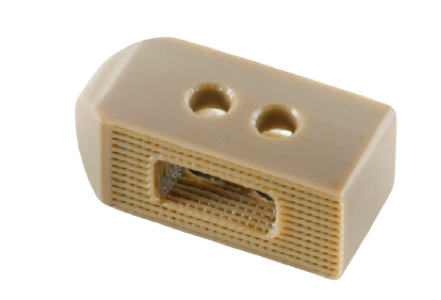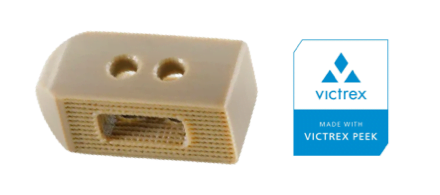A comprehensive guide to 3D printing medical devices
The transformative power of additive manufacturing in the medical sector
Challenge the conventional paradigms of healthcare solutions
Leveraging expertise in high-performance polymers and intricate knowledge of 3D printing dynamics, it becomes evident that the transformative power of additive manufacturing has long fueled unparalleled advancements in the medical device sector, from nascent R&D stages to full-scale production. With the proliferation of cost-effective 3D printers and escalating investments in state-of-the-art machinery and advanced polymeric materials, an increasing number of enterprises are tapping into 3D printing’s potential, challenging the conventional paradigms of healthcare solutions.
Incorporating 3D printing directly into the operational workflow affords medical device pioneers and fabricators a twofold advantage: substantial cost savings and accelerated market entry. This cutting-edge technology paves the way for agile product ideation, groundbreaking end-use components, and the bespoke fabrication of medical tools — feats that remain elusive with traditional manufacturing methods. A prime example was evident post-2020, where additive manufacturing showcased its prowess, transitioning from mere ideation to bulk manufacturing of crucial medical provisions in a swift timeframe.
Within this meticulously curated guide, we delve into the myriad applications of 3D printing within the medical device realm, juxtapose the predominant 3D printing methodologies tailored for medical advancements, and offer a succinct insight (supplemented with resourceful links) into the regulatory intricacies governing 3D printed medical apparatus.
3D Printing Applications for Medical Devices
The synergy of rapid production, cost-effectiveness, bespoke tailoring, and unbridled design autonomy inherent in 3D printing has bifurcated its pivotal roles in the medical device sector. Primarily, this manifests in the intricate fabrication of components indispensable for surgical procedures, and secondarily, in the precision-engineered crafting of medical implants. Let’s delve deeper into these cardinal applications, underpinned by real-world instances that epitomize the multifaceted prowess of additive manufacturing.
Manufacturing Patient-Specific Medical Devices
Conventional manufacturing methodologies, like injection molding or thermoforming, necessitate costly tooling, rendering them suboptimal for crafting customized or individualized components. 3D printing mitigates this limitation via a twofold approach.
Rapid Tooling for Traditional Manufacturing Processes
First, 3D printing can be utilized to fabricate custom rapid tooling such as 3D printed molds, patterns, casts, and dies, tailored for various traditional manufacturing techniques, encompassing injection molding, thermoforming, silicone molding, overmolding, insert molding, compression molding, metal casting, and beyond.
A notable application in this domain is spinal cages, which are designed and crafted in alignment with the unique spinal anatomy data acquired from advanced scanning techniques. The production of these implants involves molding specialized materials to accurately conform to the patient-specific model for each surgical requirement. Given that 3D printers can directly translate these digital schematics into tangible models within mere hours, they have emerged as the predominant fabrication technique for these critically significant spinal implants.
Directly 3D Printing Patient-Specific Medical Devices
The synergy of rapid production, cost-effectiveness, bespoke tailoring, and unbridled design autonomy inherent in 3D printing has bifurcated its pivotal roles in the medical device sector. Primarily, this manifests in the intricate fabrication of components indispensable for surgical procedures, and secondarily, in the precision-engineered crafting of medical implants. Let’s delve deeper into these cardinal applications, underpinned by real-world instances that epitomize the multifaceted prowess of additive manufacturing.
Biocompatibility of 3D printing materials
Additionally, 3D printing is progressively employed for the direct manufacturing of patient-tailored, final-use medical devices. The absence of tooling requirements in 3D printing methodologies facilitates the crafting of bespoke components and intricate designs, both seamlessly and economically.
In this context, orthopedics is an exemplary sector illustrating the medical uptake of 3D printing. Spinal cages, patient-specific joint replacements, and bone fixation devices are among the components that can be precisely 3D printed to cater to individual anatomical needs.



